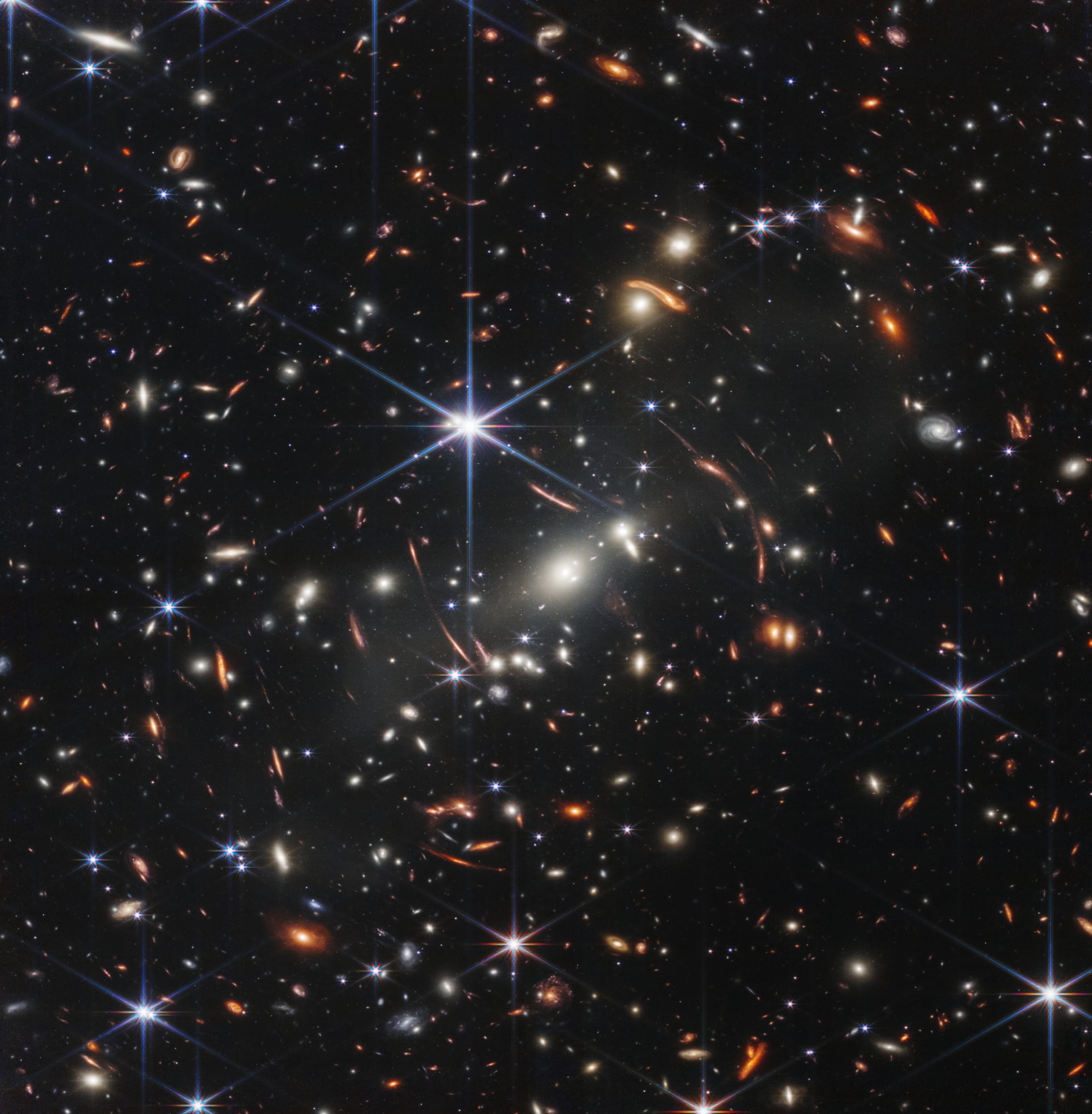NASA released the first image from its James Webb Space Telescope on Monday. The image is the deepest and sharpest infrared image of the distant universe made by any telescope to date.
Known as Webb’s First Deep Field, this image of galaxy cluster SMACS 0723 contains thousands of galaxies – including the faintest objects ever observed in the infrared.
President Joe Biden (D) released the first full-color image from the Webb Space Telescope during a public event at the White House. This first image showcases the powerful capabilities of the new space telescope which was built in partnership with ESA (European Space Agency) and CSA (Canadian Space Agency).
“These images are going to remind the world that America can do big things and remind the American people – especially our children – that there’s nothing beyond our capacity,” said Biden. “We can see possibilities no one has ever seen before. We can go places no one has ever gone before.”
"Webb's First Deep Field is not only the first full-color image from the James Webb Space Telescope, it’s the deepest and sharpest infrared image of the distant universe, so far,” said NASA Administrator Bill Nelson. “This image covers a patch of sky approximately the size of a grain of sand held at arm’s length. It’s just a tiny sliver of the vast universe. This mission was made possible by human ingenuity – the incredible NASA Webb team and our international partners at the European Space Agency and the Canadian Space Agency. Webb is just the start of what we can accomplish in the future when we work together for the benefit of humanity."
This is just the first image. More will be released at 9:30 a.m. CDT Tuesday in a live broadcast on NASA Television.
“Scientists are thrilled that Webb is alive and as powerful as we hoped, far beyond Hubble, and that it survived all hazards to be our golden eye in the sky,” said John Mather, Webb senior project scientist at NASA’s Goddard Space Flight Center in Greenbelt, Maryland. “What happened after the big bang? How did the expanding universe cool down and make black holes and galaxies and stars and planets and people? Astronomers see everything twice: first with pictures, and then with imagination and calculation. But there’s something out there that we’ve never imagined, and I will be as amazed as you are when we find it.”
Webb promises to solve mysteries in our solar system, look beyond to distant worlds around other stars, and probe the mysterious structures and origins at the beginnings of creation. Webb launched Dec. 25, 2021, on an Ariane 5 rocket from Europe’s Spaceport in French Guiana.
This deep field image was taken by Webb’s Near-Infrared Camera (NIRCam) and is a composite made from images at different wavelengths, totaling 12.5 hours – achieving depths at infrared wavelengths beyond the Hubble Space Telescope’s deepest fields, which took weeks.
The image shows the galaxy cluster SMACS 0723 as it appeared 4.6 billion years ago. The combined mass of this galaxy cluster acts as a gravitational lens, magnifying much more distant galaxies behind it. Webb’s NIRCam has brought those distant galaxies into sharp focus – they have tiny, faint structures that have never been seen before, including star clusters and diffuse features. Researchers will soon begin to learn more about the galaxies’ masses, ages, histories, and compositions, as Webb seeks the earliest galaxies in the universe.
NASA Headquarters oversees the mission for the agency’s Science Mission Directorate. NASA’s Goddard Space Flight Center in Greenbelt, Maryland, manages Webb for the agency and oversees work on the mission performed by the Space Telescope Science Institute, Northrop Grumman, and other mission partners. In addition to Goddard, several NASA centers contributed to the project, including the agency’s Johnson Space Center in Houston; Jet Propulsion Laboratory (JPL) in Southern California; Marshall Space Flight Center in Huntsville, Alabama; Ames Research Center in California’s Silicon Valley; and others.
Six thousand Alabamians work at the Marshall Space Flight Center.
To connect with the author of this story, or to comment, email brandon.moseley@1819News.com.
Don’t miss out! Subscribe to our newsletter and get our top stories every weekday morning.










